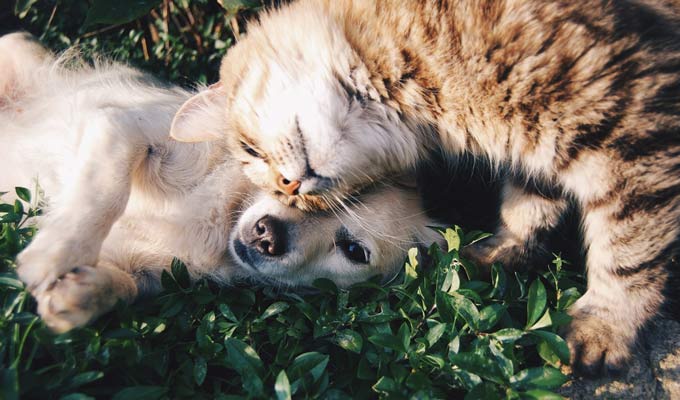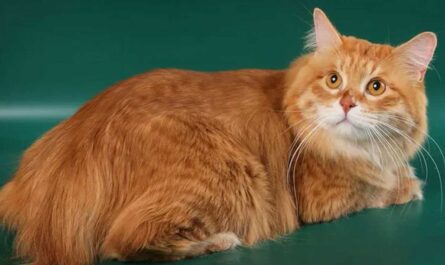How to tell the sex of your kitten? The key lies in a harmonious blend of meticulous preparation, sensitivity to the feline family dynamics, and a swift, focused approach to gender identification. By navigating this process with care and consideration, one can contribute to the well-being of the kittens and maintain the integrity of the mother-kitten bond. Sexing kittens is a crucial aspect of responsible kitten care, as it unveils vital details that significantly influence how these adorable felines will be nurtured and eventually find new homes. The process of determining their gender not only aids in tailoring care routines but also plays a pivotal role in facilitating their adoption into suitable environments.
The Deceptive Nature of Feline Appearances: Challenging Our Assumptions
At times, as caregivers, we may find ourselves succumbing to the temptation of attributing gender based on superficial traits. Perhaps a petite, delicate appearance prompts us to assume femininity, or a robust, assertive demeanor convinces us of a kitten’s maleness. However, this inclination towards anthropomorphism holds little merit, as discerning the true sex of a kitten goes beyond mere visual impressions and behavioral cues.
Nurturing Trust and Comfort: Establishing a Bond with Mother and Kittens
Before delving into the delicate process of sexing kittens, a foundational element of trust must be established between the caregiver and the feline family. Gaining the mother cat’s confidence is paramount, as her comfort with human interaction sets the stage for a stress-free examination. Patience and gentle handling become essential tools in creating an atmosphere conducive to ensuring the health and welfare of the entire litter.
The Indispensable Role of Physical Examination: Unveiling the Truth Beneath the Tail
Contrary to popular misconceptions, the only foolproof method for ascertaining a kitten’s sex is a hands-on examination of the genital area located beneath the tail. This delicate and precise procedure not only dispels any lingering uncertainties but also ensures accurate identification, laying the foundation for tailored care protocols and future rehoming strategies.
Prerequisites for a Successful Examination: Ensuring Readiness of Mother and Kittens
Embarking on the task of sexing kittens requires meticulous preparation to ensure the well-being of both the mother and her offspring. The kittens must reach a minimum age of two weeks, a developmental stage that allows for a more accurate assessment. Equally vital is the need to acclimate the mother to the presence of caregivers, fostering an environment where her babies can be handled without causing distress.
Establishing Comfort and Environment
Before embarking on the task of identifying the gender of your kittens, it is imperative to lay the groundwork for a stress-free and efficient process. Taking a few preliminary measures ensures that the conditions are conducive for this delicate undertaking.
Ensuring Maternal Comfort
Begin by ensuring that the mother cat is amenable to you handling her offspring. The significance of this cannot be overstated, as a cooperative mother eases the entire procedure. To achieve this, consider enticing her with delectable treats, diverting her attention away from the impending examination. Alternatively, relocating her to a separate room might be a wise strategy, providing a controlled environment for the gender assessment. This careful maneuvering allows you to proceed without the burden of apprehension regarding the mother cat’s potential reactions. In cases involving feral kittens, a pragmatic approach involves placing them in a box, removing them from the maternal presence temporarily, and promptly returning them, minimizing disruptions.
Optimal Room Conditions
Another critical facet to address is the ambient temperature of the examination room. Young kittens are particularly susceptible to chilling, and placing them in a cold environment detached from their mother can lead to discomfort. Hence, it becomes paramount to create a warm and cozy setting, ensuring the well-being of the kittens throughout the gender identification process.
Methodical Gender Identification
Once the preparatory steps have been meticulously undertaken, the actual process of gender identification can commence. The efficiency and success of this task hinge on a systematic and considerate approach.
Swift Inspection Technique
Executing the inspection swiftly and seamlessly is paramount, especially when dealing with very young kittens. The fragility of the mother-kitten bond underscores the need for a rapid yet thorough examination. Minimizing the duration of separation is crucial to prevent any undue distress to the kittens or disruption to the delicate dynamics between the mother and her offspring. This delicate balance requires finesse and precision to ascertain the gender without compromising the overall well-being of the feline family.

Sensitivity to Kitten’s Reactions
Throughout the process, it is imperative to remain attuned to the emotional state of the kittens. If at any point they exhibit signs of agitation or distress, it is crucial to halt the examination promptly and reunite them with their mother. This sensitivity to their well-being ensures that the procedure remains a positive experience for the kittens, minimizing any potential trauma associated with the gender identification process.
Determining Kitten Sex: A Delicate Process
When you’ve decided that the moment is ripe for the next steps in caring for your adorable feline companion, delicately cradle your kitten in your hands and prepare for the nuanced task of determining its sex. Embarking on the journey of determining your kitten’s sex requires a careful and gentle approach. Once the decision has been made that the time is right, the first step involves delicately picking up the kitten and preparing for the subsequent steps in this insightful process.
Observing the Perineal Area
To discern your kitten’s sex, meticulous attention must be paid to the perineal area. Begin by placing the kitten on a soft, non-slip surface such as a towel, and positioning it on its front. Lift the kitten’s tail to gain visual access to the perineal region—the area surrounding and below the anus.
Identifying Male and Female Characteristics
Within the perineal area, both male and female kittens exhibit two distinct openings: the anus and the genital opening. Notably, the top opening is the anus, while the lower one can be either the penis (for males) or the vulva (for females). Crucially, the shape of the genital opening serves as a key characteristic in distinguishing between the sexes.
Differentiating Characteristics in Older Kittens
As kittens mature, the distinctions become more apparent. In older kittens, the penis presents as a circular opening, contrasting with the vulva’s small vertical slit. A vivid analogy is often drawn, likening the appearance of a female kitten to an upside-down exclamation mark, while a male kitten is said to resemble the two dots of a colon. Notably, for kittens over ten weeks, male anatomy may include a visible scrotal sac between the anus and penis, housing the two testicles.
Challenges in Determining Sex in Younger Kittens
The task becomes more intricate when dealing with younger kittens, where the differences are less pronounced. In such cases, the focus shifts to gauging the distance between the two orifices. For females, the vulva is near the anus, while in males, a more considerable gap separates the penis and the anus. This nuance underscores the complexity of sex determination in certain age groups.
A Systematic Approach for Accuracy
To mitigate potential errors, inspecting each kitten individually is advised. This systematic examination involves sorting through the litter one by one. Generally, a balanced distribution of genders is observed, with approximately 50% males and 50% females. Categorizing them into distinct groups based on similar appearances simplifies the process.
Final Verification for Precision
Following the initial sorting, a second check is imperative for assurance. Ensure that each kitten within the designated groups—referred to as the “male group” and “female group”—exhibits a consistent appearance. This final verification step adds an extra layer of accuracy to the sex determination process, leaving no room for uncertainty. Cat accessories on Amazon
A Futuristic Cat Census
Gaze into the horizon of futurity, armed with the foresight granted by these subtle insignias. The marked kittens stand as living bookmarks, chapters in the voluminous tome of feline existence. A panoply of hues or a distinctive dash—a codified language that unravels over time, revealing not only the present but also the nascent future of your feline companions.
When in Doubt, Consult the Oracle
Yet, an oracle stands in the background, clad in white coats and draped in the mantle of wisdom—the local DVM (Doctor of Veterinary Medicine). In moments of hesitancy, when the task transforms into an enigma, seek the counsel of the venerable DVM. A sage in matters of feline lore, this professional custodian of animal well-being provides the compass to navigate the labyrinth of uncertainty.
Other Interesting Articles
- Ocicat Cat Breed Profile: Health, Facts, Traits, Groom, Care
- Ojos Azules Cat Breed Profile: Health, Traits, Groom, Care
- Oregon Rex Cat Breed Profile: Health, Traits, Groom, Care
- Oriental Bicolor Breed Profile: Health, Traits, Groom, Care
- Oriental Longhair Breed Profile: Health, Traits, Groom, Care
- Oriental Shorthair Breed Profile: Health, Traits, Groom, Care
- Peterbald Cat Breed Profile: Health, Traits, Groom, Care
- Pixie-Bob Cat Breed Profile: Health, Traits, Groom, Care
- Ragamuffin Cat Breed: Health, Facts, Traits, Groom, Care
- Russian White Cat Breed Profile: Health, Traits, Groom, Care
- Serengeti Cat Breed Profile: Health, Traits, Groom, Care
- Savannah Cat Breed Profile: Health, Traits, Groom, Care
- Selkirk Rex Cat Breed Profile: Health, Traits, Groom, Care
- Singapura Cat Breed Profile: Facts, Coat, Traits, Groom, Care
- Sokoke Cat Profile, Traits, Health, Facts, Grooming, Care
- Somali Cat Profile, Traits, Health, Facts, Grooming, Care
- Turkish Angora Cat Profile, Traits, Health, Grooming, Care
- Sphynx Cat Breed: Profile, Traits, Health, Grooming, Care
- Turkish Van Cat Breed: Profile, Traits, Grooming, Care
- Toyger Cat Breed: Profile, Traits, Health, Grooming, Care



